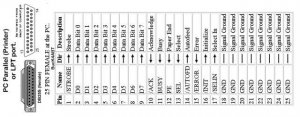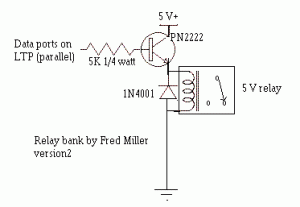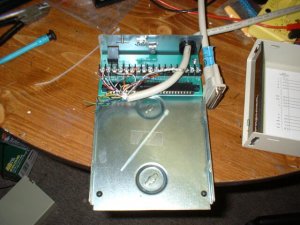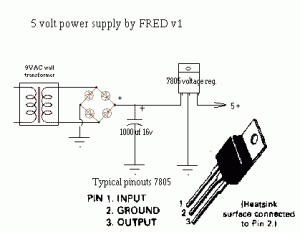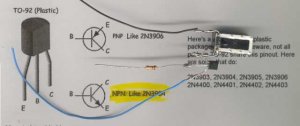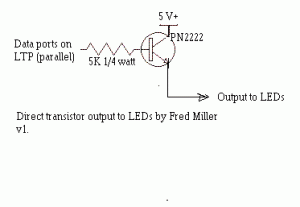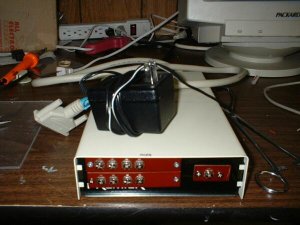F
Fred_M
The purpose of this experiment is to build a simple relay bank to control other devices using a computer parallel port as the controller. This is much like the home automation kits sold by companies for hundreds of dollars. I’m going to try and do it with old obsolete computer parts, reclaimed electronic parts, and less than $25. A word of warning to cover my butt and all, this is a free DIY project and should only be done on a computer that you don’t care about frying. Burn up your new P4 Dell, well to bad. I’m not responsible for my actions, let alone yours.
So to start we need an old working computer with a working parallel port and winders 95, 98, or 98se. I’m using an old IBM 486 with 32 Megs RAM and a 500-MB hard drive. A 386 with 8megs should work even. We also need this software to control the parallel port, which can be downloaded from link at bottom and scanned for Virus. We also need a couple LEDs and wires to hook them up along with some probes that fit the parallel socket holes. I’m using little nails.
After downloading the file get winzip if you don’t have it and extract all the files to a 3.5 floppy. There are 10 files. Then run setup on the machine you are setting up and follow directions. Then go to the folder on your C drive called Diyk74 and read the readme and follow the directions to install the drivers in the drivers.txt file. Then launch the Diyk74 from you programs menu and read the help files that will tell you how to operate it. I never have got the manual set (set all works) to work so don’t worry about it. We will be using the timed sets anyway. Now you can use a led to test your output between a data out port and ground. The grounds are all common and Data Bit 0 corresponds to relay 1 (etc) on the control interface. The data out port is V+ by the way, so hook the positive lead of you led to it. Avoid shorting out an active port as I’m not sure it might not do permanent damage. There will be 8 ports we can use for control. When you can get control over the led lighting we can go on to the next part, the building of the relay bank. One other note is the led can be made to flash by inputting a time on into the TOP toggle and time off into the OFF toggle. It’s a bit fuzzy in the help file.
SOFTWARE LINK http://users.mo-net.com/insspecial/k74_win.zip
So to start we need an old working computer with a working parallel port and winders 95, 98, or 98se. I’m using an old IBM 486 with 32 Megs RAM and a 500-MB hard drive. A 386 with 8megs should work even. We also need this software to control the parallel port, which can be downloaded from link at bottom and scanned for Virus. We also need a couple LEDs and wires to hook them up along with some probes that fit the parallel socket holes. I’m using little nails.
After downloading the file get winzip if you don’t have it and extract all the files to a 3.5 floppy. There are 10 files. Then run setup on the machine you are setting up and follow directions. Then go to the folder on your C drive called Diyk74 and read the readme and follow the directions to install the drivers in the drivers.txt file. Then launch the Diyk74 from you programs menu and read the help files that will tell you how to operate it. I never have got the manual set (set all works) to work so don’t worry about it. We will be using the timed sets anyway. Now you can use a led to test your output between a data out port and ground. The grounds are all common and Data Bit 0 corresponds to relay 1 (etc) on the control interface. The data out port is V+ by the way, so hook the positive lead of you led to it. Avoid shorting out an active port as I’m not sure it might not do permanent damage. There will be 8 ports we can use for control. When you can get control over the led lighting we can go on to the next part, the building of the relay bank. One other note is the led can be made to flash by inputting a time on into the TOP toggle and time off into the OFF toggle. It’s a bit fuzzy in the help file.
SOFTWARE LINK http://users.mo-net.com/insspecial/k74_win.zip


